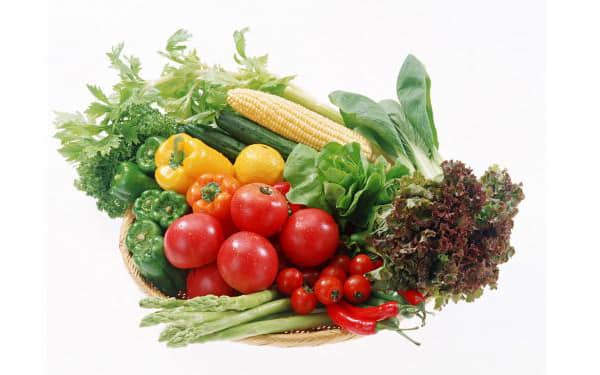
Volleyball is an explosive, quick, power-driven sport. What propels the ball over the net is energy – primarily anaerobic muscle energy – for serving, spiking, blocking, digging and diving. Long rallies and training sessions are fueled by a combination of anaerobic glycolysis and aerobic metabolism – a combination of fuels from the breakdown of muscle sugars called glycogen and a balanced diet containing carbohydrates, protein and fats.
The key to peak performance volleyball nutrition is pre-game fuel, inter-match replenishment and consistent glycogen building; keeping the ball airborne means keeping the players fed and hydrated 24/7. The estimated calorie expenditure per minute for noncompetitive and competitive play is found in Table 1.
| Table 1 Food Energy | |||||
| Level of play | Calories used per minute of play for various weight athletes | ||||
| 117 LBS | 123 LBS | 130 LBS | 143 LBS | 150 LBS | |
| Competitive | 7.8 | 8.2 | 8.7 | 9.5 | 10 |
| Noncompetitive | 2.7 | 2.8 | 3.0 | 3.3 | 3.4 |
Food energy or calories from foods and fluids are not uniquely different from other power team sports. A high carbohydrate diet of approximately 50-65 percent of total calories fuels both anaerobic and aerobic energy needs. The type of high carbohydrate foods that meet these needs include fruits, veggies, whole grain cereals, breads and pastas and low-fat dairy. Ten to 25 percent of calories from protein provides additional power strength for muscle repair. Main meal foods such as lean meats, chicken, turkey, fish, nonfat cheeses, dairy and egg whites or Egg Beaters, or protein-fortified smoothies or trail mixes can meet these daily needs. Less than 30 percent from healthy fats are recommended for managing ideal competitive weights and can be met through “seasonings” or snacks of nuts, nut butters, fish oils, avocado, soy and vegetable oil-based salad dressings.
While carbohydrates are key to performance, special attention should be given to mineral-rich carb choices to manage electrolyte losses from sweating. Replacement of sodium, potassium with sport drinks, lightly salted foods such as baked chips or pretzels, calcium fortification with low-fat dairy snacks such as nonfat milk or yogurt and iron-rich foods such as lean meats, poultry, fortified cereals, beans or peas, can assist with energy utilization, efficient muscle contraction and prevention of hyponatremia (low blood sodium) and hypokalemia (low blood potassium), which can impair performance. In addition, antioxidants (vitamins E and C from a combination of nut and fruit snacks) have been shown to assist in muscle repair and recovery in competitive athletes.
Volleyball nutrition is not complete without addressing fluid intake. The typical volleyball player may lose up to one or more pounds during practice, or the equivalent of 16 oz of fluid. Therefore, a minimum of two cups of fluid prior to playing, 4-6 oz of fluid every 15 minutes of play and an additional two cups of fluid after practice should be consumed to manage symptoms of dehydration. Athletes training and residing in warmer climates need to ensure round-the-clock hydration in order to prevent the cumulative effects of dehydration on training and performance.
TAKING VOLLEYBALL NUTRITION ON THE ROAD The challenge to peak performance during competitive match means getting enough nutritious food while traveling. Players should prepare by taking a stash of sport or breakfast bars, shakes, sport drinks, crackers, trail mix, healthy soups like vegetable, bean, noodle or minestrone, small cereal boxes, fresh fruit and mini bagels on the bus or plane. Pre-game meals should be light in fat, moderate in protein and carbohydrate-based. Pasta with grilled chicken or shrimp, lean meat with baked potato or a lean meat, mayo-free six-inch whole-wheat sub will also work two to three hours before game time. If extra fuel is needed before play, a cup or two of sport drink, water with half a sport bar one hour before play may help the hungry player; however, whatever foods are consumed before competitive play should be tested beforehand in practice.
A DAY IN THE FOOD LIFE FOR VOLLEYBALL PLAYERS
Morning
- Citrus fruit or juice or cup of strawberries or blueberries
- Egg white omelet with green veggies, tomato and nonfat cheese
- 1 small bowl oatmeal, whole-grain cereal or slice of whole-grain bread
- 2 tsp nut butter
- Water
AM Snack
- Low-fat breakfast bar or sport bar
Water or sugar-free beverage
Afternoon
- Turkey wrap or sandwich with low-fat, whole-wheat tortilla or bread
- 3-4 oz turkey
- Lettuce/tomato
- 2 tsp mayo
- 1 small bag baked chips
- 1 apple or pear
- Water or sugar-free beverage
PM Snack
- Fresh fruit smoothie with low-fat yogurt
- Or low-fat yogurt with fresh fruit and granola sprinkle
- Water or sugar-free beverage
Evening
- Grilled chicken salad with whole-grain roll
- Or fresh grilled fish with veggies and baked potato
- Or Sushi with soup and salad
- Or pasta with veggies and lite red sauce
- Water or sugar-free beverage<
strong>Evening Snack
Frozen low-fat yogurt with fresh fruit topping or air blown popcorn with a parmesan sprinkle

